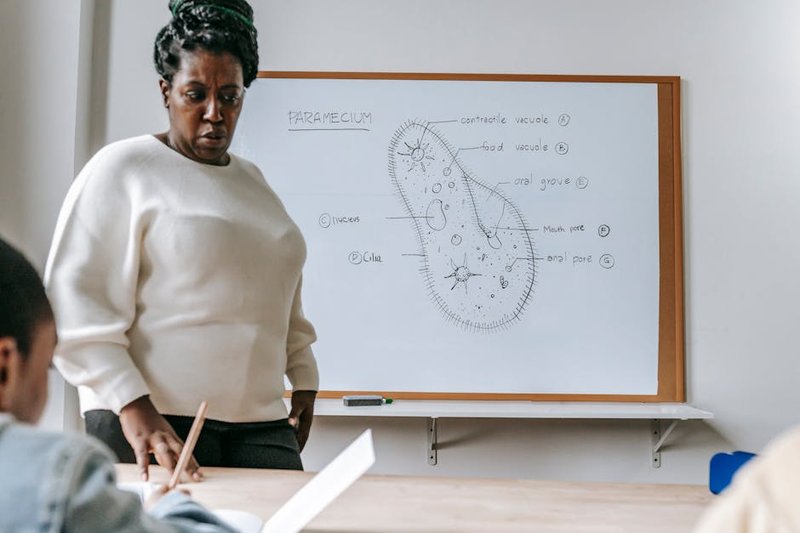Ever attend a dinner party where everyone’s arguing about the best route to take downtown, and you wisely suggest asking both the taxi driver AND the cycling enthusiast? That’s essentially what a Mixture of Experts (MoE) does in machine learning—it consults multiple specialized “experts” and combines their wisdom for better results. As someone who’s spent countless hours deciphering these systems, I’m excited to share how this clever approach works without making your brain explode.
What Exactly IS a Mixture of Experts?
Mixture of Experts is a machine learning technique that divides complicated problems into manageable chunks by employing multiple specialized networks (our “experts”). Rather than having one massive system trying to solve everything, MoE uses different experts for different aspects of a problem—like having specialized doctors instead of expecting your general practitioner to perform brain surgery.
MoE falls under the umbrella of ensemble learning, which is basically the “strength in numbers” philosophy applied to artificial intelligence. In the older literature, you might see these systems referred to as “committee machines,” which always makes me picture a group of neural networks sitting around a conference table drinking coffee and arguing over predictions.

Experts – The Core Components of MoE
Every Mixture of Experts system has three essential ingredients:
-
Experts (𝑓₁…𝑓ₙ): These are individual networks that each take the same input and produce their own outputs. Think of them as different consultants all examining the same problem but specializing in different aspects.
-
Weighting Function (also called a gating function): This clever component decides how much to trust each expert’s opinion based on the input. It assigns weights to determine each expert’s contribution to the final answer.
-
Parameters (𝜃): The technical settings that define how both the experts and the weighting function operate.
The magic happens when these components work together. When given an input, each expert offers their opinion, then the weighting function decides whose opinions matter most for this particular case, and combines them accordingly—usually by taking a weighted sum.
Experts – Real-World Applications: Meta Pi Networks
Let me share a fascinating real-world example of MoE in action. The Meta Pi Network, developed by Hampshire and Waibel, was used for classifying phonemes in Japanese speech from six different speakers.
They trained six expert networks, each being a time-delayed neural network (essentially a fancy convolutional network analyzing speech spectrograms). What’s fascinating is that their system naturally assigned five experts to five individual speakers. But for the sixth speaker, instead of dedicating a single expert, the system used a combination of the experts that specialized in the other male speakers.
This demonstrates one of the beautiful aspects of MoE—it organically discovers natural divisions in the problem space without being explicitly told to do so.
Adaptive Mixtures: Getting Smarter Over Time
The “adaptive mixtures of local experts” takes things a step further by using a Gaussian mixture model. Each expert predicts a Gaussian distribution (basically saying “I think the answer is around here, give or take some uncertainty”).
What makes this approach clever is how it learns: experts that make good predictions for certain inputs get more weight for similar future inputs. Meanwhile, experts that perform poorly for those inputs get less weight. It’s like a classroom where students who excel at certain types of problems get called on more often for those specific questions.
This creates a natural specialization process. If two experts are both decent at handling a certain type of input, but one is slightly better, the weighting function gradually shifts more responsibility to the better one. The “runner-up” expert then becomes free to specialize in other types of inputs.
Hierarchical Mixtures: Experts Managing Experts
Things get even more interesting with hierarchical mixtures of experts (HME). Imagine a corporate structure where middle managers (also weighting functions) decide which lower-level experts to consult, and then upper management combines these recommendations.
This hierarchical approach allows the system to discover increasingly complex patterns in the data. The top-level combines regions identified by the middle level, which combines regions identified by the lowest level—creating a sophisticated division of the problem space.

Sparse Mixtures: The Modern Era of MoE
The latest development in MoE technology comes from the realm of large language models. “Sparse” MoE activates only a small subset of experts for any given input, rather than using all experts for every prediction. Google’s Switch Transformer and similar models use this approach to create extremely large models that remain computationally efficient.
This is like having thousands of specialists available but only consulting the 2-3 most relevant ones for each question—dramatically increasing capacity without proportionally increasing computation time.
Why MoE Works So Well
The effectiveness of Mixture of Experts comes from several key advantages:
-
Divide and Conquer: By breaking complex problems into simpler subproblems, each expert can specialize in what it does best.
-
Soft Decisions: Unlike hard switching between different models, MoE makes smooth transitions between experts through weighted combinations.
-
Automatic Specialization: The system naturally discovers which experts should handle which inputs through the training process.
-
Scalability: Especially with sparse variants, MoE allows for enormous model capacity while keeping computation requirements manageable.
-
Interpretability: By analyzing which experts activate for which inputs, we can gain insights into how the model understands the problem space.
From Theory to Practice
The elegance of Mixture of Experts lies in its intuitive approach to problem-solving. Instead of forcing a single model to become a jack-of-all-trades, MoE acknowledges that different problems benefit from different approaches.
This approach mirrors how we humans solve problems in the real world. When faced with a complex decision, we might consult different specialists, weigh their advice based on their areas of expertise, and combine their insights to reach a conclusion.
As large language models and other AI systems continue to evolve, MoE architectures are becoming increasingly important. Google’s Switch Transformer, Mixtral 8x7B, and other recent models leverage this technique to achieve remarkable capabilities without corresponding increases in computational requirements.
The next time you interact with an advanced AI system that seems surprisingly adept at handling diverse types of queries, there’s a good chance you’re benefiting from a Mixture of Experts architecture working behind the scenes—a digital committee of specialists collaborating to provide you with the best possible answer.
And really, isn’t that how the most difficult problems should be solved? Not by relying on a single perspective, but by bringing together multiple viewpoints, each contributing its unique strengths to form a more complete picture. In both human and artificial intelligence, it seems that diversity of expertise leads to better outcomes—a lesson worth remembering beyond the realm of machine learning.



